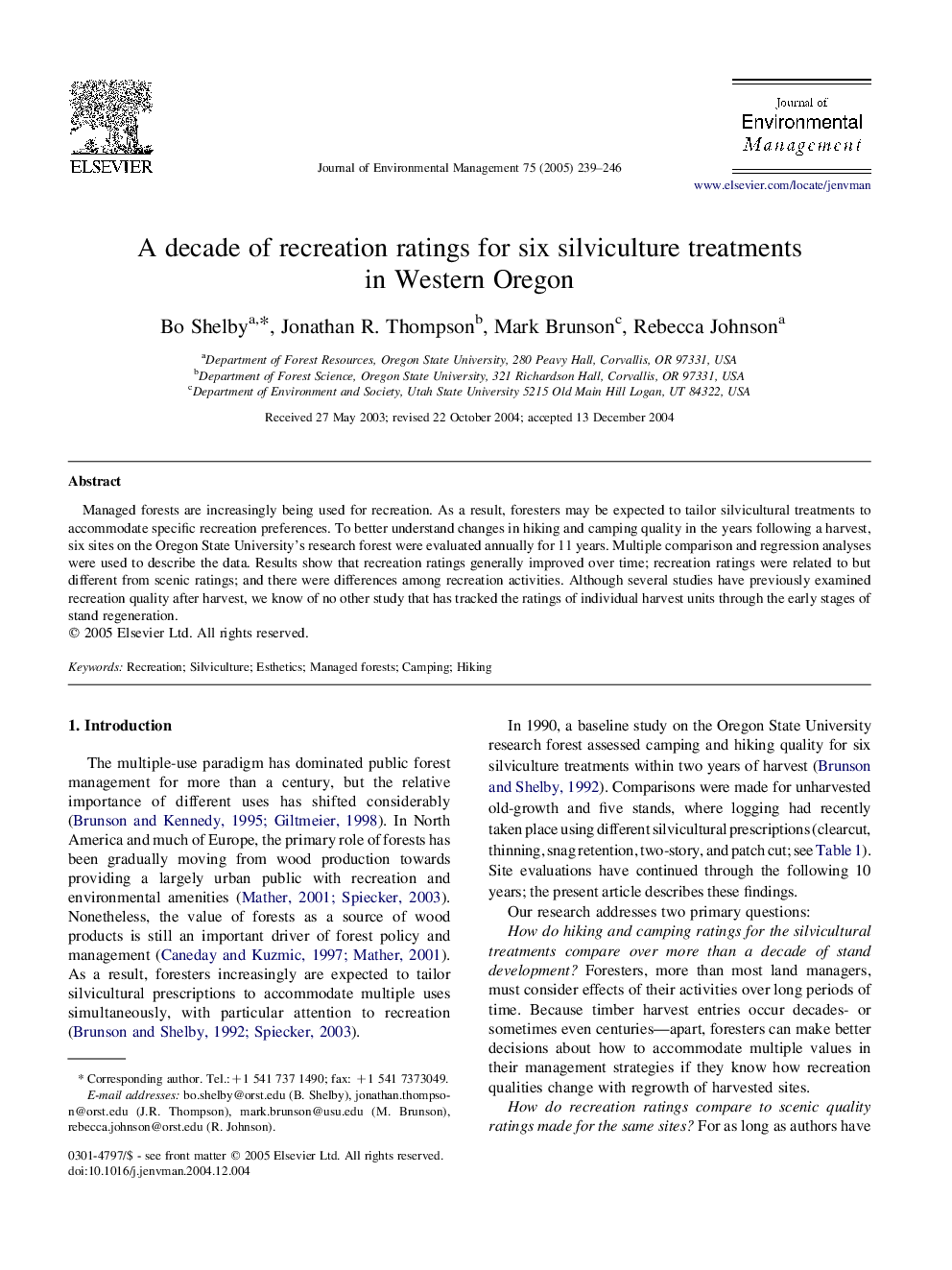| Article ID | Journal | Published Year | Pages | File Type |
|---|---|---|---|---|
| 10505618 | Journal of Environmental Management | 2005 | 8 Pages |
Abstract
Managed forests are increasingly being used for recreation. As a result, foresters may be expected to tailor silvicultural treatments to accommodate specific recreation preferences. To better understand changes in hiking and camping quality in the years following a harvest, six sites on the Oregon State University's research forest were evaluated annually for 11 years. Multiple comparison and regression analyses were used to describe the data. Results show that recreation ratings generally improved over time; recreation ratings were related to but different from scenic ratings; and there were differences among recreation activities. Although several studies have previously examined recreation quality after harvest, we know of no other study that has tracked the ratings of individual harvest units through the early stages of stand regeneration.
Related Topics
Physical Sciences and Engineering
Energy
Renewable Energy, Sustainability and the Environment
Authors
Bo Shelby, Jonathan R. Thompson, Mark Brunson, Rebecca Johnson,
